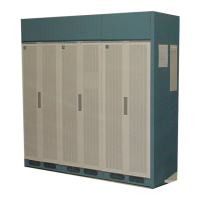Disable All UDP Transport for SIP Packet Trunking
....................................................................................................................................................................................................................................
Purpose
This procedure prevents new incoming or outgoing SIP calls from
being established over the UDP transport layer.
Since UDP paths are not configurable apart from the processor group
to which they belong, it is necessary to remove the PHs in the
processor groups in order to make the IP address of the processor
group unreachable from the IP network. Removing the SIP PHs from
service will cause the routers in the IP network to report “Destination
Unreachable” to any switch that attempts to send SIP messages to
them. That same router report will let the other offices know that they
should avoid attempting new calls via SIP/UDP to the unavailable
PHs.
When to use
This procedure should only be used to prevent any incoming or
outgoing calls from using SIP packet trunking with UDP transport,
generally only if the whole SIP packet trunking feature is being
degrown from the office.
Related information
Refer to 235-118-258, Recent Change Reference for information on
the RC/V system.
Refer to the 235-600-700/750, Input/Output Messages manuals for
additional information on the Input and Output commands.
Admonishments
• If there is no equivalent circuit route (such as an ISUP7 trunk
group) to a particular far office that is served by SIP packet
trunking, this procedure will cause it to be impossible to route
calls to that far office.
• If an SM Full Initialization of a SIP GSM occurs, the effects of
this procedure are automatically reversed by the initialization,
and this procedure will need to be repeated.
Before you begin
Required Tools
• Supplemental Trunk Line Workstation (STLWS) or Recent
Change and Verify (RC/V) terminal
• Access to RC/V Menu Interface
Deprovisioning
....................................................................................................................................................................................................................................
6-26
Lucent Technologies 235-200-118
Issue 3.02B, March 2007

